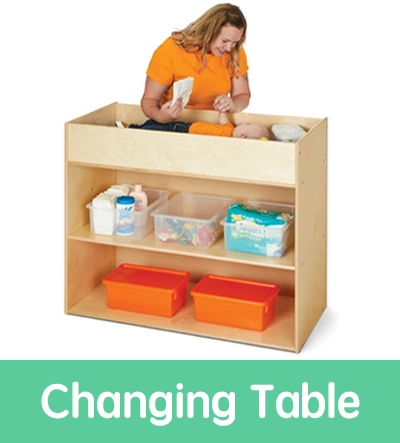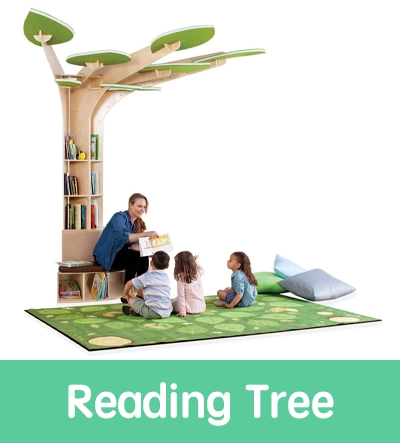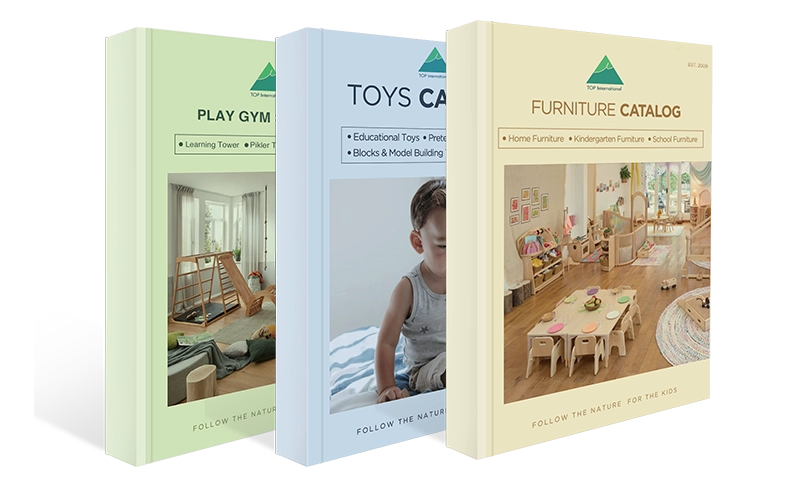How can you design a preschool classroom layout that fosters creativity, learning, and engagement? What elements are essential for creating a comfortable yet functional space for young children? How do you balance aesthetics with practicality to ensure a welcoming environment for both children and teachers? If you’ve been struggling with these questions, you’ve come to the right place.
Creating the ideal preschool classroom layout goes beyond arranging furniture. It’s about designing a space that promotes learning, creativity, and development for young children. A well-thought-out layout can encourage better engagement, ease of movement, and a calm environment. In this guide, we’ll walk you through different layout options and provide you with actionable insights to help you design the perfect classroom.
Curious to know more about how small adjustments to your preschool classroom layout can significantly impact learning? Keep reading for expert tips and practical advice.
Classroom Layout Overview and Importance
When it comes to creating effective learning environments, the preschool classroom layout, kindergarten classroom layout, and even the nursery classroom layout play a crucial role. A well-designed classroom encourages positive interactions, enhances engagement, and fosters a safe, nurturing environment for young children.
The Role of Classroom Layout in Early Childhood Education
The preschool classroom design and Montessori classroom layout prioritize accessibility and flexibility. These spaces are designed to encourage autonomy, collaboration, and exploration. Whether it’s a preschool classroom floor plan that promotes free movement or a kindergarten classroom layout that supports group activities, the arrangement of furniture and learning materials significantly impacts how children interact with each other and their surroundings.
In daycare and childcare settings, the layout must also ensure that young children are safe, comfortable, and can easily transition between different activities. For example, a small preschool classroom layout might require careful consideration of space to optimize movement, while a nursery classroom design may focus on providing areas for rest and play.
Why is Classroom Layout So Important?
A thoughtful preschool classroom layout helps facilitate specific learning goals by fostering an environment that supports cognitive, social, and emotional development. In Montessori settings, the layout often reflects the Montessori principle of freedom within limits, allowing children to independently access materials and engage in hands-on learning. This is evident in designs that include Montessori classroom layout ideas with open shelving and accessible learning stations. Similarly, pre-kindergarten classroom layouts and early childhood classroom designs emphasize movement, flexibility, and interaction.
Moreover, daycare classroom layout or a special education preschool classroom layout needs to ensure that each child’s individual needs are met, whether it’s creating quiet spaces for reflection or providing interactive areas for social learning.
Classroom Layout Benefits
Creating a Comfortable Learning Environment
One of the primary benefits of an effective preschool classroom layout is that it creates a welcoming, engaging, and organized environment. A well-planned kindergarten classroom layout or nursery classroom layout can greatly enhance children’s ability to focus, explore, and interact with their peers. For example, having clearly defined zones for different activities such as reading, art, or quiet play can make children feel secure and confident in their surroundings.
The Classroom as the “Third Teacher” in Early Childhood Education
The environment in early childhood education is crucial for fostering development, learning, and social interactions. The concept of the classroom as the “third teacher” emphasizes how physical spaces—whether in a Montessori preschool layout, kindergarten floor plan, or daycare classroom design—actively influence children’s experiences and growth.
An intentional classroom layout encourages independence, exploration, and autonomy, while providing diverse learning zones for both individual and collaborative activities. Thoughtfully designed spaces help nurture social and emotional development, offering opportunities for solitary play as well as group interaction. In this way, the classroom itself becomes an interactive learning tool, promoting skills such as problem-solving, social engagement, and emotional regulation.
Fostering Independence and Creativity
The Montessori classroom layout encourages independence by allowing children to choose activities based on their interests. This layout empowers students to become self-motivated learners. Similarly, a preschool classroom design that integrates areas for free play and structured learning fosters creativity and encourages children to explore their interests at their own pace.
Supporting Group Work and Social Interaction
For group activities, a preschool classroom layout that encourages collaboration is essential. A flexible kindergarten classroom design—with movable tables or seating arrangements—can help facilitate group learning. This is especially important in pre-kindergarten classroom layouts where social development and interaction are key components of the curriculum.
Safety and Organization
The layout of a kindergarten classroom and preschool classroom floor plan should prioritize safety, ensuring that furniture is arranged in a way that children can easily navigate without obstacles. Clear pathways, sufficient open space, and age-appropriate furniture are all essential components. A small preschool classroom layout, for example, might need compact furniture and a more minimalistic design to ensure safety while maintaining an open and flexible environment.
Customization for Special Needs
Layouts for special education preschool classrooms or nursery classrooms should take into account the specific needs of children with different abilities. A well-designed special education classroom layout will ensure that children feel safe and are able to engage in activities that promote both personal and educational growth. Daycare classroom layouts also need to be adaptable for children with varying developmental stages, providing spaces where they can both focus and relax.
Types of Classroom Layouts for Various School Types
The classroom layout is more than just about how the furniture is arranged—it’s about creating an environment where children can thrive. Whether you are designing a preschool classroom layout, kindergarten classroom layout, nursery classroom layout, or daycare classroom layout, each type requires thoughtful consideration of age-appropriate spaces and functional zones. Below, we explore different classroom types and their typical zones to help educators create optimal learning environments.
| Classroom Layouts Types | Advantages | Disadvantages |
|---|---|---|
| Preschool Classroom Layout | – Encourages creativity and social development. – Varied activities for different learning styles. | – Space constraints in smaller classrooms. – Overstimulation from too many zones. |
| Kindergarten Classroom Layout | – Promotes academic and creative growth. – Fosters socialization and cooperative play. | – Limited space can result in clutter. – Too much structure may reduce creativity. |
| Nursery Classroom Layout | – Promotes bonding and trust between caregivers and infants. – Nurtures physical and sensory development. | – Limited peer interaction at early stages. – Focus on basic developmental needs reduces independence. |
| Daycare Classroom Layout | – Balance of play and learning activities. – Easy transitions between playtime and naptime. | – Lacks quiet, focused spaces for individual learning. – Space-sharing may disrupt active play. |
| Childcare Classroom Layout | – Flexible spaces for various activities and age groups. – Personalized attention to younger children. | – Diverse age groups in one room may cause design challenges. – Hard to balance safety and stimulation. |
Preschool & Kindergarten Classroom Layout Zones Design
A well-organized preschool or kindergarten classroom is divided into distinct zones that cater to different developmental needs. These areas—such as reading, creative arts, sensory exploration, and play—help promote cognitive growth, social skills, and physical development. Thoughtful placement of these zones not only supports various learning styles but also encourages children to engage in a wide range of activities. Let’s explore each zone and how it contributes to a balanced, stimulating classroom environment.

Learning Area
The Learning Area is a dedicated space where children can engage in focused, independent learning. This area often includes desks or tables, educational materials, and puzzles that promote cognitive skills, problem-solving, and critical thinking. The environment should be quiet, organized, and free from distractions, allowing children to concentrate on individual tasks.
Advantages:
- Encourages independent thinking and self-reliance.
- Supports a variety of learning materials like books, puzzles, and educational games that engage different learning styles.
Disadvantages:
- Can be challenging for younger children to remain focused for extended periods.
- Requires careful space planning to ensure it does not become too isolated or disconnected from group activities.
Reading Area
The Reading Corner is a cozy space designed to encourage a love for books and stories. It typically features comfortable seating like cushions or small chairs and is stocked with a variety of age-appropriate books. This corner provides children with the opportunity to enjoy individual reading or participate in group storytelling sessions.

Advantages:
- Fosters language development and literacy skills.
- Creates a calm and nurturing environment for quiet activities.
Disadvantages:
- Limited space may restrict the number of children who can comfortably use the area at once.
- Needs careful selection of books to ensure they are appropriate for the children’s reading levels.

Drawing Area
The Drawing Area is dedicated to fostering creativity and fine motor skills through art. This space typically includes a variety of art supplies such as crayons, colored pencils, markers, paints, and construction paper. It allows children to express themselves visually and develop their hand-eye coordination.
Advantages:
- Promotes creativity and artistic expression.
- Enhances fine motor skills, such as grip strength and hand dexterity.
Disadvantages:
- Art supplies can get messy, requiring regular cleanup.
- Some children may be hesitant to engage with art if they lack confidence in their abilities.
Creative Art Station
An area where children can engage in arts and crafts, using materials like clay, markers, and paints. It fosters creativity and fine motor skills while allowing children to express themselves artistically.

Advantages:
- Supports creative expression and cognitive development.
- Enhances fine motor skills through activities like drawing, cutting, and painting.
Disadvantages:
- Can be messy and require significant cleanup.
- Limited space may restrict the number of children who can use the art station at one time.

Caregiving Changing Table Area
A space dedicated to the care needs of infants or very young children, including diaper-changing stations, storage for supplies, and places for caregivers to tend to children.
Advantages:
- Supports hygiene and caregiving routines in a structured, easy-to-access area.
- Ensures the safety and comfort of very young children.
Disadvantages:
- May limit flexibility in classroom design, particularly in shared spaces.
- Could feel segregated if not integrated thoughtfully into the classroom layout.
Indoor Play Area
An area designed for physical activities indoors, equipped with climbing structures, mats, soft play equipment, and other items that promote physical activity.

Advantages:
- Supports gross motor development by encouraging children to climb, jump, and move freely.
- Provides a safe play area for physical activities, especially in adverse weather conditions.
Disadvantages:
- Requires space management to avoid overcrowding or accidents.
- Limited variety of activities can reduce the effectiveness of this area.

Role Play Area
A designated area with costumes and props where children can pretend to be various characters or engage in imaginative scenarios (e.g., playing “house,” “doctor,” or “store”). This area promotes creativity and social interaction.
Advantages:
- Encourages imaginative play and helps develop problem-solving and social skills.
- Allows children to explore different roles and understand real-world scenarios.
Disadvantages:
- The area can become disorganized quickly, requiring frequent cleaning and organizing.
- Some children may be hesitant to engage in role-play if not encouraged or guided.
Sensory Exploration Area
A space where children can explore different textures, sounds, and materials, helping them engage their senses. The area may include sensory bins, musical instruments, and textured surfaces to stimulate tactile exploration.

Advantages:
- Helps children develop their sensory processing skills.
- Encourages curiosity and exploration through touch, sound, and sight.
Disadvantages:
- Materials in this area may require more maintenance and organization.
- Younger children may be more prone to putting objects in their mouths, requiring careful supervision.

Outdoor Play Area
A spacious, outdoor area where children can engage in a variety of physical activities like swinging, sandbox play, or running. It supports large motor skill development and outdoor exploration.
Advantages:
- Promotes active play, helping children develop gross motor skills.
- Provides an opportunity for children to explore nature and interact with peers.
Disadvantages:
- May be weather-dependent, limiting usage in some climates.
- Requires proper maintenance to ensure safety and hygien
Parent Communication Station
The Parent Communication Station serves as a dedicated area for parents and caregivers to exchange important information. It provides space for leaving messages or notes, as well as displaying important announcements and updates from the staff. Additionally, the station is designed to offer a comfortable waiting area for parents during drop-off and pick-up times, with seating where they can relax while waiting for their children.

Advantages:
- Strengthens communication between parents and caregivers.
- Provides a comfortable waiting area for parents.
- Allows for quick updates and announcements.
Disadvantages:
- May be underused if parents prefer digital communication.
- Requires periodic maintenance to stay organized.
A well-organized classroom layout is key to fostering an engaging and supportive learning environment for young children. The thoughtful design of distinct zones not only promotes cognitive, social, and physical development but also encourages creativity, collaboration, and exploration. By considering the unique needs of each child and balancing spaces for independent activities with group interactions, educators can create a dynamic classroom that adapts to various learning styles.
Ultimately, a well-planned preschool or kindergarten layout ensures that every child has the opportunity to thrive in a space that’s both functional and inspiring, empowering them to grow in every aspect of their early education journey.
Creating Designated Area in the Classroom
Dividing the classroom into specific learning zones can greatly enhance the educational experience. Designated areas for reading, art, science, and sensory play encourage children to focus on the task at hand and transition smoothly between different activities. Each zone should be equipped with the appropriate materials and furniture to support the intended learning outcomes.
Furniture and Equipment Selection for a Preschool Classroom
Selecting the right furniture and equipment is vital for an effective preschool classroom. Child-sized tables and chairs, accessible shelving, and comfortable reading areas are key components. The furniture should be durable, easy to clean, and appropriate for the children’s age and size. Additionally, choosing multi-functional furniture can help maximize space and flexibility in the classroom.

Toddler Chair
Our Montessori Toddler Chair, crafted for comfort and independence, is perfectly sized for young learners. Its sturdy, child-safe construction and ergonomic design promote proper posture, while its sleek, minimalist style seamlessly blends into any Montessori setting, encouraging autonomy and self-reliance in toddlers.
Square Table
This Square Table features automatic height adjustment and telescopic legs, offering unparalleled convenience and adaptability. Designed for the dynamic kindergarten environment, it’s practical, durable, and perfectly accommodates the varying needs of growing children, ensuring comfort and versatility in everyday use.


Cabinet Storage
Our Montessori Kids Cabinet Storage is designed for accessibility and organization. Crafted with young learners in mind, it features child-friendly height and easy-to-reach compartments. Durable and versatile, this cabinet neatly stores educational materials, fostering independence and order in a Montessori classroom setting.
Lockers & Cubbies
Our Montessori Kids Lockers & Cubbies offer personalized storage solutions for young learners. Designed for easy access and organization, these lockers and cubbies encourage responsibility and independence. Sturdy, child-sized, and perfect for storing personal items, they are a practical addition to any Montessori classroom.


Changing Table
Our Montessori Kids Wooden Changing Table combines functionality with safety, designed specifically for young children. Featuring a sturdy build and child-friendly height, this changing table ensures comfort and ease during use. Its natural wooden finish adds a warm, inviting touch to any Montessori setting.
Reading Tree
The Kids Reading Tree, featuring 4 benches and a 360-degree design, offers a unique, interactive reading experience for children. Its engaging tree-like structure and circular arrangement foster social interaction and communal love for reading, making it an enchanting addition to any reading area.

Maximizing Space and Promoting Movement in the Classroom


Efficient use of space is essential in a preschool classroom layout. It’s important to allow enough room for children to move around freely without feeling cramped. Organizing materials and furniture in a way that promotes a clear line of sight for both children and teachers can enhance safety and supervision. Creative storage solutions can help keep the classroom organized and clutter-free.
- Child-sized Furnishing:
Always incorporate child-sized furniture to make the furnishing accessible and less intimidating for the child. - Strategic Placement:
Arrange furniture to ensure unobstructed visibility and easy access. - Accessible Storage:
Use low, open shelving for easy access to learning materials. - Flexible Seating Options:
Incorporate various seating types for different activities and preferences. - Interactive Learning Stations:
Include areas that promote hands-on, interactive learning experiences.

The Role of Color and Decor in a Preschool Classroom Layout
The use of color and decor in a preschool classroom layout can have a significant impact on children’s mood and engagement. Bright, cheerful colors can stimulate learning and creativity, while too many vibrant colors might be overwhelming. Incorporating children’s artwork and educational posters can also enhance the learning environment.
- Have Minimal Decorations:
The walls should have muted colors with minimal decorations to avoid overstimulation and distractions. - Color Psychology:
Utilize colors that promote calmness and concentration, like blues and greens. - Natural light:
Make sure the learning area is near or at least close to a window. Windows will let natural light in and enhance the child’s learning experience. - Soft Furnishings:
Add soft furnishings like rugs and cushions for comfort and warmth. - Age-Appropriate Displays:
Ensure all decor is relevant and understandable to the children’s age group.

Incorporating Natural Elements and Sensory Experiences in the Classroom
Bringing elements of nature into the classroom and creating sensory-rich experiences can greatly benefit preschool children. Plants, natural light, and materials with different textures can stimulate the senses and support children’s connection with the natural world. Sensory play areas with items like sand, water, and play dough can also be incorporated.
Safety Considerations in a Preschool Classroom Layout
Safety is paramount in any preschool classroom layout. Furniture should be stable and without sharp edges, electrical outlets should be covered, and hazardous materials should be kept out of reach. The layout should allow for easy evacuation in case of emergencies, and all materials used should be non-toxic and child-safe.
- Stable, Rounded Furniture:
Ensure all furniture is sturdy and has rounded corners for safety. - Non-toxic Materials:
Use only non-toxic, child-safe materials in a classroom setup. - Age-Appropriate Design:
Ensure all elements are suitable for the age and abilities of children. - Flexible, Open Spaces:
Montessori-style classrooms should have open areas for free movement and activities.
Technology Integration in a Preschool Classroom Layout
Integrating technology in a preschool classroom layout, when done appropriately, can enhance learning experiences. Interactive whiteboards, tablets, and age-appropriate educational software can be valuable tools. However, it’s important to balance technology use with hands-on learning experiences.

Conclusion
Creating an engaging and functional preschool classroom layout is a thoughtful process that requires consideration of various factors. By focusing on creating designated learning zones, selecting appropriate furniture and equipment, maximizing space, incorporating engaging colors and decor, integrating natural and sensory elements, ensuring safety, and appropriately using technology, you can design a preschool classroom layout that is not only aesthetically pleasing but also highly effective in promoting learning and development in young children








